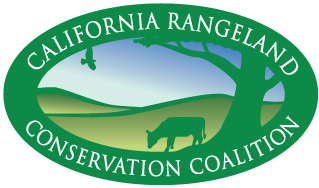 Definition: “Rangeland” means land on which the existing vegetation, whether growing naturally or through management, is suitable for grazing or browsing of domestic livestock for at least a portion of the year. Rangeland includes any natural grasslands, savannas, shrublands (including chaparral), deserts, wetlands, and woodlands (including Eastside ponderosa pine, pinyon, juniper, and oak) which support a vegetative cover of native grasses, grasslike plants, forbs, shrubs, or naturalized species.” (CA Public Resources Code section 4789.2 e.)
Definition: “Rangeland” means land on which the existing vegetation, whether growing naturally or through management, is suitable for grazing or browsing of domestic livestock for at least a portion of the year. Rangeland includes any natural grasslands, savannas, shrublands (including chaparral), deserts, wetlands, and woodlands (including Eastside ponderosa pine, pinyon, juniper, and oak) which support a vegetative cover of native grasses, grasslike plants, forbs, shrubs, or naturalized species.” (CA Public Resources Code section 4789.2 e.)
The Rangeland Coalition has collected and/or developed a wealth of informative research on working rangelands that benefit plant and animal species, water, ranchers, the environment, ecosystems and many other natural resources and systems. In addition the Coalition has worked on policies and initiatives that affect rangelands and our rancher-stewards, these are all available below and on our Research and Publications pages for your reference.
General
- PowerPoint Presentation (Schohr, Barry, Vail, and Ford)
- Certified Rangeland Manager Program (Society of Range Management)
- Conservation Grazing Management Plan Outline (Ford)
- Rangeland Conservation Funding Sources for Grazing Operations (Ford)
- Sources of Additional Technical Information on Ecology and Management of California Grasslands (Ford)
- Conservation Grazing Management Planning Purposes and Plan Elements (Ford)
- Rangeland CEAP (Society for Range Management)
Defenders of Wildlife in collaboration with the Rangeland Coalition published a report on rancher’s perspective on ecosystem services. Presentations from the Rangeland Coalition/University of California, Davis sponsored Managing Rangelands for Ecosystem Services Workshop and Field Day held on October 18, 2011 are available by clicking here.
The California Roundtable on Agriculture and the Environment releases a set of recommendations to facilitate the permitting processes for on-farm environmental restoration projects. Many partners to the California Rangeland Conservation Coalition worked on this project and research done by the Coalition is sited in the white paper. For a copy of the white paper and more information click here.
